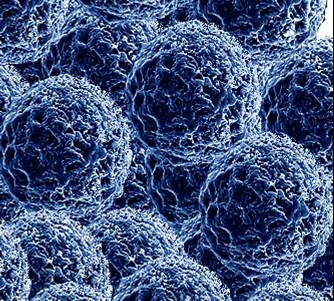A Biodesign Institute researcher at the Arizona State University, Nongjian Tao has discovered a novel method of measuring the catalytical reactions of single nanoparticles. Effective nanoparticle catalysts are required to carry out many vital functions.

Nanoparticles are used as electrochemical catalysts
Nanoparticle catalysts help modify the rate of chemical reactions. These catalysts are used for various applications including drug synthesis, improvement of fuel cell reactions, enhancement of emission and pollution devices, and in production of biofuels and polymers.
Measuring catalytical reactions will aid in improving nanoparticle catalysts. Conventional methods are not able to measure the properties of individual nanoparticles; they are capable of measuring the properties of many nanoparticles in average. Measurement of catalytical reactions of single nanoparticles will help in finding out the relationship between the catalytical reaction efficiency and the nanoparticle’s composition, size and shape.
Tao employed plasmonic electrochemical imaging to investigate the role of platinum nanoparticles functioning as electrochemical catalysts. This method overcomes the disadvantages of scanning electrochemical microscopy, which uses a microelectrode to mechanically scan the sample surfaces for imaging electrochemical reactions.
Plasmonic electrochemical imaging is based on the surface plasmon resonance phenomenon for electrochemical reaction imaging. Surface plasmons consist of free electron oscillations that occur in a metal electrode. They can be produced and also detected with light. During electrochemical reactions, electron exchange occurs between the electrodes and the reactants. The electrons are detectable through electrochemical methods such as scanning electrochemical microscospy.
Measurement of electrochemical reactions without detecting the electrons directly has to be achieved. The reactant’s conversion into reaction products has to be detected. When this conversion occurs near the electrode, it affects the plasmon, which leads to modifications in the reflectivity of light. The technique converts this phenomenon into an optical image.
Platinum nanoparticles that were printed on a gold thin-film electrode in the form of a microarray were used for the experiment and the electrocatalytic activity was studied. The possibility of high-throughput screening of nanoparticle catalytic activities has been demonstrated. The method can also be used for studying individual nanoparticles.
Disclaimer: The views expressed here are those of the author expressed in their private capacity and do not necessarily represent the views of AZoM.com Limited T/A AZoNetwork the owner and operator of this website. This disclaimer forms part of the Terms and conditions of use of this website.